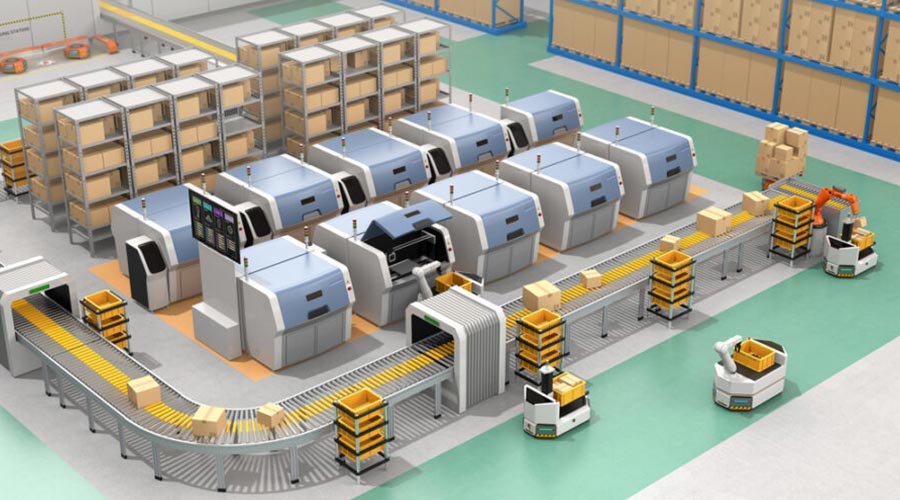
Companies are trying to get closer to customers, to keep costs down indisputably, micro-fulfillment is one of the most well-liked trends in the supply chain. The ability to get products into consumers’ hands faster than your competitors is the final leg up, therefore not solely it’s a trend, but a strategy enabling today’s retailers to decentralize fulfilment, produce a far better client experience, and redefine the retail landscape.
Dark stores
Dark stores are traditional retail outlets that have been converted to local fulfilment centres. As e-commerce adoption is fast, and in-store consumer visits are decreasing, retailers are increasingly considering changing the proportion of their stores to dark stores. Stores already equipped with refrigerated and frozen sections can help meet increases in cold supply chain requirements to fulfil online grocery orders. MFCs in dark store locations can also fulfil all-important impulse purchases, made when orders are picked up.
Customers now expect Omnichannel retail experiences from their favourite brands, which means a seamless and consistent experience across channels including online, mobile, and in-person. If a consumer purchases an item online, for instance, the omnichannel model means the customer can return the item to any brick-and-mortar location, wherever it was purchased.
This technology is another major trend impacting retail logistics, as logistics companies recognize the need to seamlessly and reliably share data back and forth with customers.
For example, real-time location tracking coupled with real-time traffic updates make it possible to optimize delivery windows. Embedded data platforms make it attainable to connect and integrate data leveraging capabilities that are already built-in to the solution. Embracing embedded integration technologies allows retailers to better share data throughout their supply chains, connect with consumers in a lot of significant ways and more effectively track inventory.
Big data analytics opens up a world of possibilities for retail logistics operations. It helps supply chain experts identify the streamlined flow of goods/resources across the warehouse and the supply chain. It also optimizes routing for last-mile delivery, thus shortening order fulfilment times and enabling more businesses to offer faster deliveries to consumers. This is often done by aggregating data from many sources including weather patterns, real-time traffic, fuel prices, diversions, congestion, and much more. By leveraging big data analytics to optimize routing.
Robotics is already revolutionizing the long run of the logistics industry. The collaborative robot especially is making tremendous headway in streamlining and optimizing warehousing, order fulfilment, and delivery operations. Collaborative robots, like Chuck by 6 River Systems, help to improve productivity and efficiency by streamlining picking routes and improving pick rates.
Collaborative robots are particularly appealing to retail distribution and fulfilment as the retail industry experiences significant seasonal peak periods. Because collaborative robots don’t require new infrastructure, warehouse operators can rent additional robots to accommodate seasonal demands and return them after the peak. More and more retail distribution centres will deploy robots as the technology becomes more accurate, versatile, and cheaper.
While the price has long been a critical differentiator of retail services, efficient last-mile delivery is quickly becoming a close competitor. Supply chain interruptions have led to delays and longer delivery times in the wake of the pandemic, although these capabilities are expected to recover as the world returns to a new normal.
Retailers are being pressured by customers to offer same-day or next-day delivery, a demand few companies have managed to pull-off, during the COVID-19 pandemic. As such, e-commerce retailers who can improve the speed and efficiency of their last-mile delivery services can leverage this trend to outstrip the competition.
The retail sector is changing into digital, customers are expecting quicker delivery, and the variety of products sold online has multiplied. Manual picking is unable to follow this pace, and conventional distribution centres that serve massive regions cannot provide same-day delivery to everybody. Unfortunately, setting up conventional distribution centres inside cities is not viable, due to their space requirements and the high price of land.
Micro-fulfilment centres can bring products nearer to the consumer while picking orders around 10 times quicker by using automation. Since robots are small and fast, products can be stacked more closely along and in taller racks. If these trends to be followed will undoubtedly increase the demand for micro-fulfilment centres.
POSTED BY
Ishika Adhana
Digital Marketing Executive